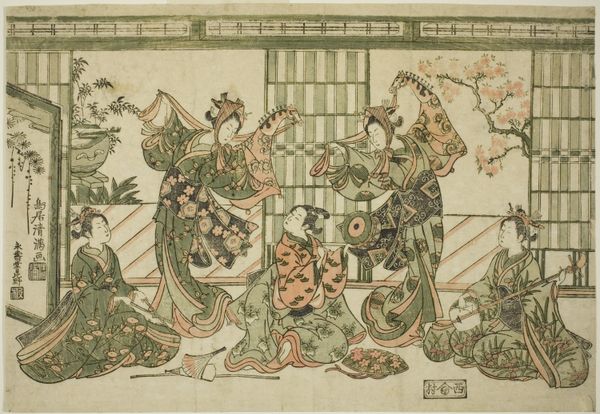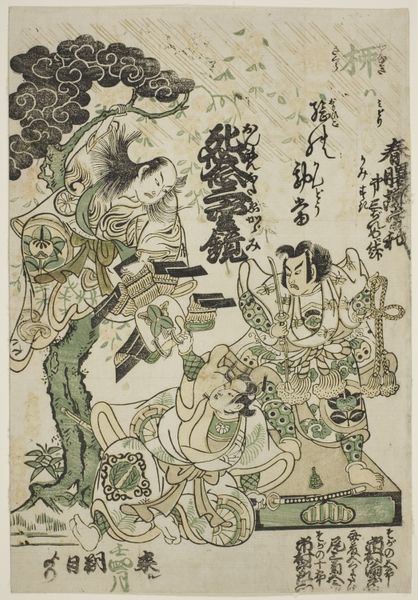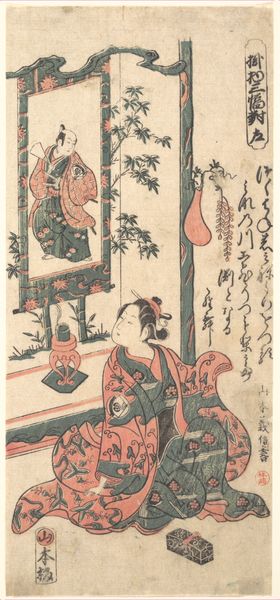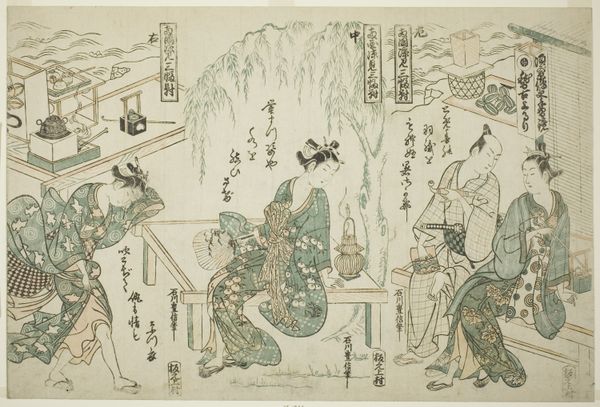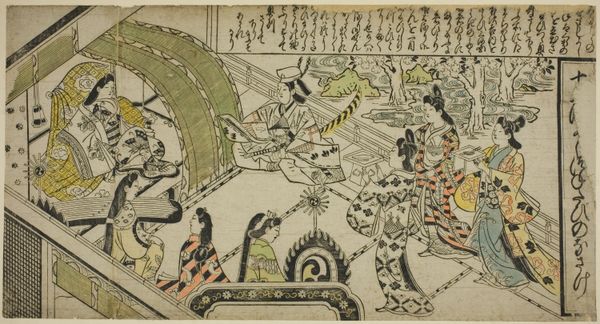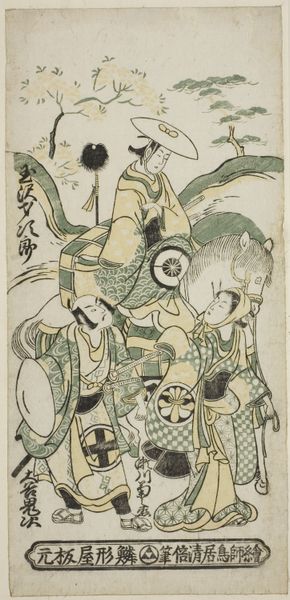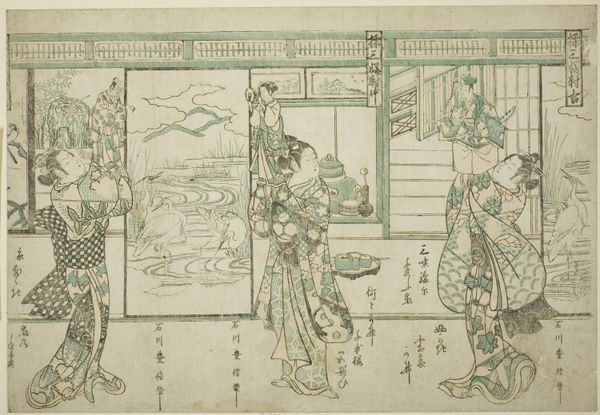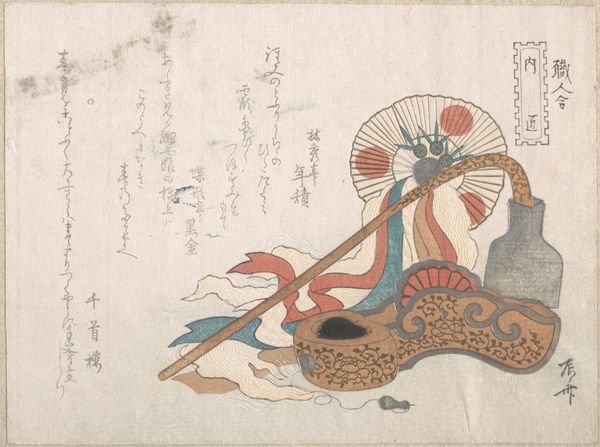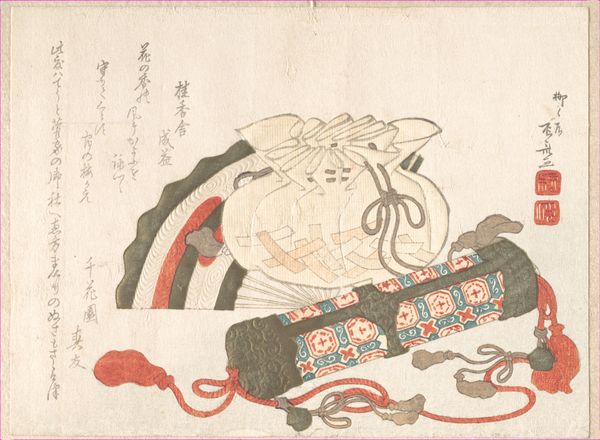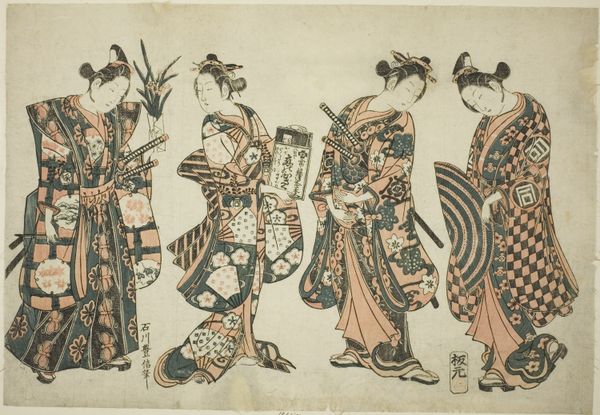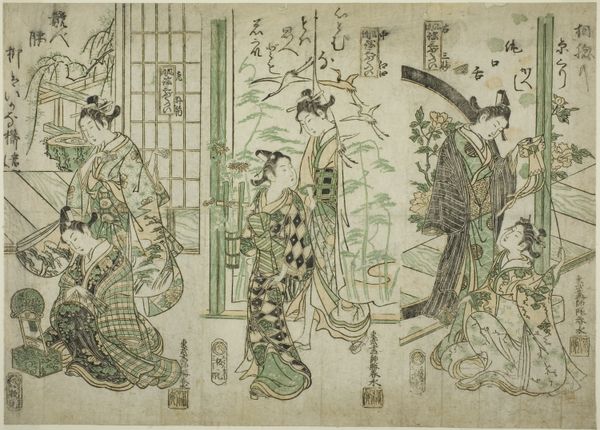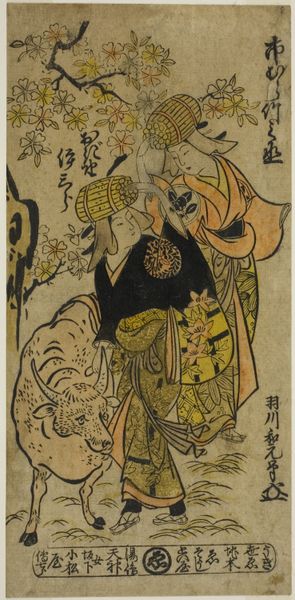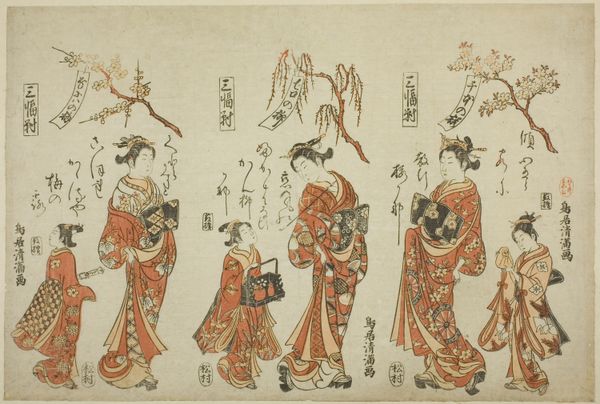
The Actors Sanogawa Ichimatsu (right), Nakamura Tomijuro (center), and Nakamura Kumetaro (left), from A Comparison - Set of Three (Nazorae Sanpukutsui) c. 1753
0:00
0:00
print, woodblock-print
#
portrait
# print
#
asian-art
#
landscape
#
ukiyo-e
#
figuration
#
woodblock-print
#
genre-painting
Dimensions: 17 5/16 × 12 1/16 in.
Copyright: Public Domain
Editor: Here we have Torii Kiyohiro's "The Actors Sanogawa Ichimatsu, Nakamura Tomijuro, and Nakamura Kumetaro, from A Comparison - Set of Three" a woodblock print from around 1753. The colors are beautiful and subtle, and there is something ephemeral about the whole composition. What do you see in this print? Curator: Well, let’s consider the material conditions that allowed this print to exist. Ukiyo-e prints like this weren't just aesthetic objects; they were commodities produced within a complex system. The artist provided the design, but skilled artisans—block cutters and printers—were the ones who actually realized the image. The publisher, then, acts almost like a factory owner. Do you think these prints democratized art at all through wider distribution, or primarily perpetuated hierarchical production processes? Editor: I see what you mean. I suppose they were more accessible than paintings, which is a form of democratization. But yes, it does highlight the specialized labor involved in making art at the time. Did the relative availability affect how actors were perceived and consumed by the public? Curator: Exactly. Think about the consumption of images too. This wasn't high art displayed in a palace, but rather a commercial product bought and sold, possibly even displayed in less refined places than one might initially consider "art." The woodblock medium itself, although traditional, speaks to the possibility of mass production. Editor: That's a good point; woodblock makes the wide distribution feasible. This helps understand these prints not only as artworks but as products embedded in society. The choice of actors is thus strategic, and aimed to meet public demands. Thanks for your insightful view. Curator: Precisely, seeing it as labor gives us a good view of what the art represents as more than simple representation. Something for us both to reflect on, it seems!
Comments
No comments
Be the first to comment and join the conversation on the ultimate creative platform.
